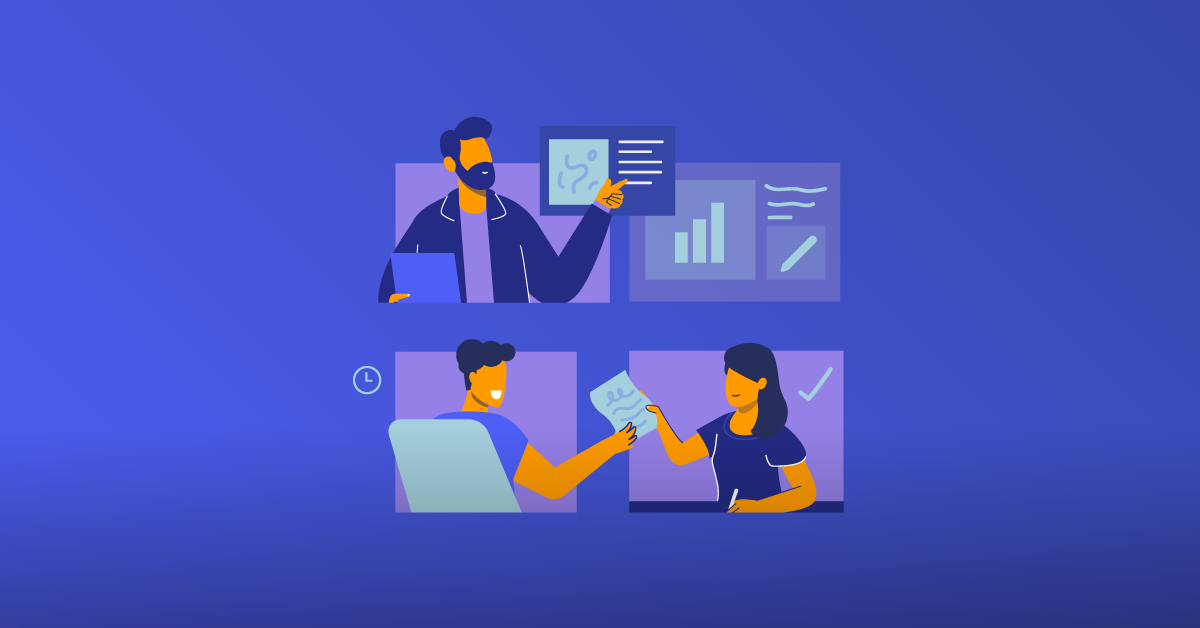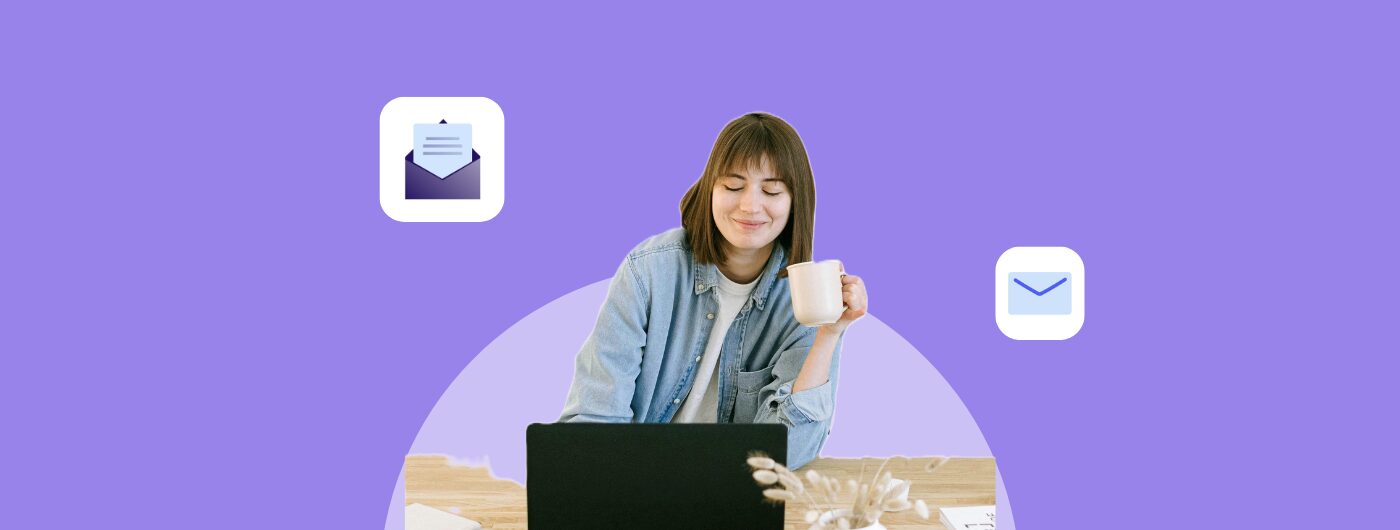Striking the Right Chord: 4 Tools for Mapping Content and Tone to Each Buyer Stage
April 7, 2021 6 min read

Even the most beautiful music, if it’s played for the wrong audience, won’t resonate. A crowd that’s expecting to hear a concerto will probably walk out on you if you choose to perform a jazz standard instead.
This same principle holds true for your sales and marketing content.
If your content fails to strike the right chord––that is, appeal to the right customers with the right message at the appropriate time––you run the risk of reaching absolutely no one at all, much like a classical violinist in a room full of hip-hop fans. You could have the strongest, most impactful, most informative content around, and you’d still be grasping at straws. Your messaging and your audience would be consistently mismatched, making your content more or less dead on arrival.
To start conducting a better content strategy, it’s essential to optimize your content by “mapping” your material to its ideal buyer and to the precise moment in the buyer’s journey where it will have the greatest effect. And though this might seem like a complex alchemical process, there are lots of tools out there that can help. (You may even be using some of them already.)
Here’s an overview of four top solutions for making your content sing by hitting all the right notes with your customers.
#1: Inspire Awareness with Automation
Consider this scenario: Your team writes a standard “Get to Know Us” email designed to generate awareness for a new product or service. You then use your email automation platform to shoot the message out to every single person on your list of prospects (past customers, web surfers who’ve clicked “subscribe” on your homepage, parties that have reached out previously, etc.).
What happens next will change the course of your email marketing and sales strategy––but only if you make the absolute most of your automation tool.
Here’s how.
A comprehensive automation platform will provide you with insightful KPIs such as open rate, bounce rate, and number of links clicked. For future messages to reach their full potential, your team should analyze this email engagement data and use it as a guiding light going forward.
If, for example, your emails are consistently opened by startup owners but tend to collect dust in the inboxes of bigger corporate players, you’ll know your later-stage content should speak to younger, smaller businesses and should perhaps assume a more informal, “mom-and-pop” voice. This insight might also encourage you to recalibrate your next batch of introductory emails to home in on your desired demographics (like those that fit the “up-and-comer” profile of our example).
These types of processes can be repeated and diversified across different buyer “segments” or “personas” to help match customers to email content that caters to their specific needs. This way, your messages can reach even more people on a more personal level, all at the exact same time.
#2: Capture Interest with Sales Enablement
Once your email awareness efforts hit home and you’ve hooked the proverbial fish, it’s time to reel your prospects in with some well-crafted, carefully curated content. Content materials at this stage of the customer journey will likely be more in-depth and educational, built to guide buyers through the “consideration” stage as they weigh their various product or service options.
But how do you decide which kinds of in-depth content (and which tone of voice) will work best for your target audiences? It’s a tall order, but a sales enablement platform can help.
With powerful features for auditing content stockpiles and tracking content coverage and engagement, sales enablement can arm sellers with critical information on the “who, what, when, and how” of buyer behavior––identifying which content is read, shared, viewed, or cast aside, and by whom. This data lets revenue-facing teams streamline the materials they have, editing as needed in order to appeal to higher quality leads.
In addition, these metrics can also empower marketers and sellers to get busy filling in gaps for content materials they don’t have, expanding their arsenal in those areas where content is falling short (i.e., by adding more video content to attract potential buyers whose tastes have begun to skew digital or by generating new case studies for active leads who’ve already devoured all existing educational info).
Without a sales enablement platform, your reps might as well be trying to catch customers with unappetizing bait. Indeed, with the lion’s share of customer loyalty currently going to sellers who provide unique value perspectives, sales teams will likely prove much less effective if they distribute content without taking advantage of the incredible, evidence-based support that sales enablement can offer.
#3: Enhance Efforts with Customer Relationship Management
If you’re wondering exactly how your email automation and sales enablement platforms will be able to aggregate and synthesize your customer data, wonder no further.
These functions can be supported through integration with a CRM system, which houses a comprehensive database of your customers detailing who they are, where they’re located, what purchases they’ve made, and more. This is the well your company draws from when launching an email campaign. It’s also the point of reference for your sales enablement platform, which can harness CRM data on individual consumers and translate it into buyer trends that are easy to analyze and digest.
Depending on the size and scope of your organization, you can use the information gathered from your CRM to rework or restyle your content according to the audience of your choice. And this audience can be as wide or as limited as you like.
Does your sales enablement interpret your CRM buyer histories as pointing to an uptick in older consumer engagement? Maybe it’s time to revamp your messaging strategy to address a more mature point of view. Conversely, if you’re looking to narrow your focus toward a single customer, your CRM can help give you instant insight into which types of content or what kinds of subject lines have prompted her to click “open” in the past, so you’ll know exactly how to catch her eye in the future.
#4 Keep Engagement Alive by Closing the Sales Loop and Opening New Channels
Using the tools above as your guide, you should be able to bring your content optimization to a resounding conclusion with a closed-loop strategy. This kind of strategy will likely require two or more platform solutions to perform together in harmony: feeding off data they’ve collected from one another and repurposing the information to encourage better sales practices in the long run.
Synchronizing your CRM and sales enablement platforms, for example, will allow you to take customer info uncovered at the end of the buyer’s journey and utilize it to refashion content typically used at the beginning (e.g. restructuring your top-of-funnel white papers to highlight a product feature that’s been instrumental in closing previous deals.) This practice can help nurture post-conversion interest and lay the foundation for repeat sales.
Another post-conversion strategy for mapping content to your audience is to constantly widen your playing field. As Marketing Insider Group notes, content for engaging post-close customers should focus on easy adoption and continued use. As such, you might want to consider adding new avenues of approach that help initiate an ongoing dialogue with recent purchasers. Case in point: If you’ve already secured a customer using some blog posts and a detailed infographic, you could switch gears by following up through a more intimate channel (such as social media) or through a different medium (such as a friendly video featuring onboarding instructions or product updates). Slight shifts in tone and venue such as these can help motivate buyers to stay in touch.
Final Notes
Like most great musical performances, your content mapping technique will probably call for some serious collaboration. The tools we’ve mentioned––each an effective “solo artist” in its own right––can work extremely well when they function as a duo, a trio, or even a quartet. Try employing more than one at a time to help broaden your reach and maximize your overall impact. And remember, none of these solutions has to be limited to a single buyer stage. They all have something to contribute: from awareness to close. So long as automation, sales enablement, a CRM, a closed-loop strategy, and a diverse plan for distribution all factor into your content optimization, your message will be well-positioned to make the best possible music for the best, most appreciative audience.
Author Bio

Eleni Hagen is a content strategist for Highspot, the industry’s most advanced sales enablement platform, which helps organizations close the loop across marketing, sales, and customers.



